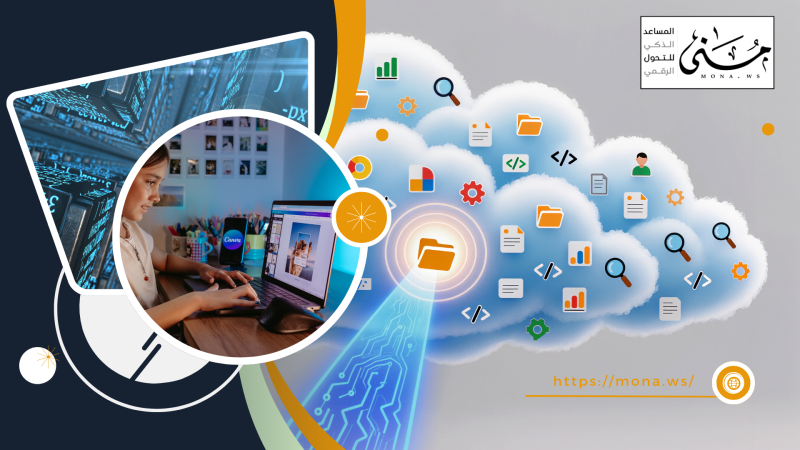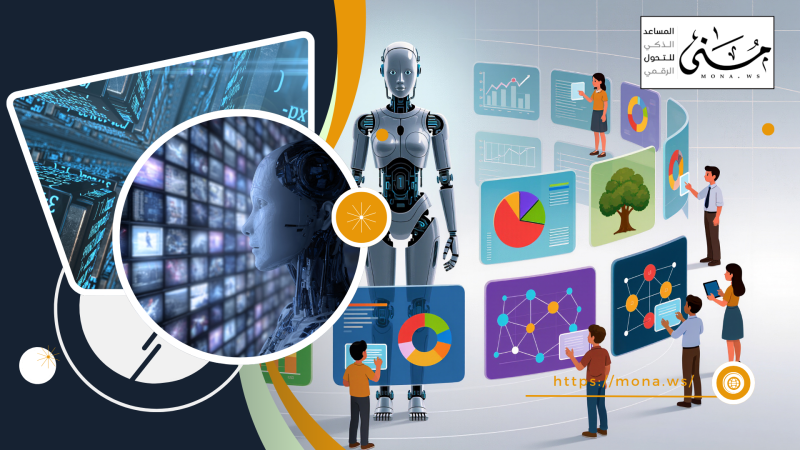The transition to a paperless environment is no longer a cosmetic option or a formal decision made by organizations to keep up with digital trends. Rather, it has become a strategic necessity imposed by the changing administrative reality and future aspirations. Organizations today are required to adopt more efficient, flexible, and sustainable working methods, and this can only be achieved through a true transformation to an automated and digital environment.
Eliminating paper doesn't just mean reducing costs or saving trees. It means completely redesigning administrative processes to speed up transactions, reduce waste, and enhance an organization's ability to respond to changes.
What does it actually mean to go paperless?
Transformation here doesn't just mean replacing paper documents with digital copies. It encompasses a comprehensive process that includes reviewing work processes, restructuring data flow within the organization, and building an integrated electronic archiving system that supports the safe storage, retrieval, tracking, and sharing of documents.
- Automation instead of printing
Instead of printing forms and contracts, organizations are relying on digital forms and automated workflows, which speed up procedures. This shift reduces the burden on secretarial teams and reduces the need for office supplies.
- Digital archiving instead of manual preservation
Instead of keeping documents in physical files that may be damaged or lost, they are archived electronically with systems such as:DocSuite, which enhances the transition to a secure, permanent, and easily accessible storage system.
- Electronic signature instead of pen
One of the most prominent features of today's digital transformation is the reliance on certified electronic signatures, which eliminates the need for a paper signature while simultaneously ensuring the legality of the document.
- Paperless meetings
The transformation doesn't stop at the procedures, but extends to the meetings themselves, which are now fully digitally managed, with minutes taken and decisions distributed electronically.
Benefits of Going Paperless
When we talk about shifting to a fully digital environment, the picture goes far beyond eliminating paper files or freeing up archive space. We're talking about a new business model that redefines the relationship between employees and information, between management and outputs, and enhances an organization's ability to survive, compete, and grow.
Transformation here is a tool for governance, a weapon for productivity, and an approach to institutional sustainability. Its most important benefits include:
- Accelerate workflow and improve performance
One of the most significant outcomes of the transformation is the ability to reduce the time required to complete tasks. An employee who once waited for a manager to manually sign a document now receives an electronic signature in seconds, and long approval chains now pass through intelligent workflow systems, reducing transaction time from days to hours.
- Reducing operating costs
The transformation process leads to a significant reduction in paper, printing, storage, and maintenance expenses. There is no need to purchase cabinets or expand the archive, and there is no need for a large team of administrative workers to organize files manually. Smart systems such asDocSuite handles these tasks with precise automation and at a lower cost.
- Enhancing institutional security
A critical aspect of transformation is digital security. While paper files can be lost or stolen, digital data archived electronically is protected by layers of encryption, and every entry and modification is recorded. This means sensitive information is protected and workflow is closely monitored.
- Remote work support
In modern work environments, where hybrid work has become common, the shift provides access to documents from anywhere, anytime, allowing teams to continue their tasks even outside the office walls, without affecting performance.
- Improving the quality of administrative decisions
The more information is available quickly and reliably, the more likely management decisions are to be made. Digital transformation provides this equation through intelligent document management platforms that facilitate data access and analysis.
How to implement the transition to a paperless environment without disrupting workflow
Transitioning from a traditional paper-based environment to a digital, paperless one may seem like a daunting task, especially for large organizations with a complex administrative structure or those that have been accustomed to paper forms for years. However, in reality, this transition can be implemented smoothly if a well-thought-out plan is followed that is based on gradualism, employee engagement, and the selection of appropriate systems such asDocSuite, through:
- Current situation assessment
The first step in transformation is to understand where the organization stands. This is accomplished by conducting a comprehensive assessment of paper practices, document silos, and the extent to which processes rely on paper. The goal is to identify the weaknesses that hinder transformation and develop an initial roadmap for change.
- Building a realistic roadmap
The transformation shouldn't be done all at once. It should be divided into phases, starting with the most prepared departments, such as human resources or purchasing, and then gradually moving to the rest of the departments. The roadmap should include clear timelines, measurable goals, and integration between the various teams.
- Employee engagement and training
The success of a transformation depends largely on the human factor. Even the most efficient systems will fail if users aren't ready to accept them. Therefore, it's essential to develop comprehensive training programs and workshops to explain the benefits of the transformation and directly link these benefits to improving the employee's daily work experience.
- Choosing a flexible and integrated digital system
The technical pillar of transformation is choosing the appropriate digital platform, and here comes the role of modern systems such as:DocSuite offers comprehensive solutions for document management, archiving, workflow, and digital signatures. The platform must be easy to use, flexible, and integrate with the rest of the organization's systems.
- Change management and follow-up
Transformation requires a leader or team responsible for monitoring and reporting on progress. This team must identify challenges and propose immediate solutions, ensuring uninterrupted business continuity throughout the transformation process. Regular meetings with departments must also be held to ensure everyone is committed to the established path.
How does paper reduction serve the organization's environmental goals?
The transition to a paperless environment is no longer just a modern management trend or an organizational luxury. It has become a strategic choice closely linked to the concepts of corporate sustainability, commitment to social responsibility, and reducing the organization's carbon footprint. This transformation reflects the organization's maturity and awareness of environmental issues, and gives it a competitive advantage in an era where success is measured not only by profits but also by the organization's impact on its environment and society.
Reducing paper serves the organization's environmental goals in:
- Reducing paper consumption
One of the most significant effects of digital transformation is the direct reduction in reliance on paper. Organizations that use solutions such asDocSuite document management has reduced its paper consumption by up to 80% in just one year, marking a significant milestone in its environmental transformation.
- Reducing emissions from printing and transportation
With less printing, there's less need for ink, printers, and shipping or delivery between branches, all of which are sources of carbon emissions. Therefore, digital transformation not only serves automation goals, but also puts the organization on the map of global environmental efforts, making it more sustainable.
- Eliminating paper archives
True transformation also reflects the utilization of space. How many institutions use rooms and warehouses solely for ineffective archives? Adopting electronic archiving means that these spaces can be used for productive purposes, a tangible aspect of the transformation journey toward institutional sustainability.
- Improving the company's image in front of investors and customers
In an era of environmental awareness, investors and customers are increasingly drawn to entities that demonstrate a commitment to environmental and digital transformation. Organizations that rely on solutions such asDocSuite's move toward a paperless environment sends a clear message that it is responsible, progressive, and ready to meet the challenges of the future.
 كيف يمكنك التحول إلى بيئة عمل خالية من الورق بسهولة؟
كيف يمكنك التحول إلى بيئة عمل خالية من الورق بسهولة؟




Comments
Add New Comment